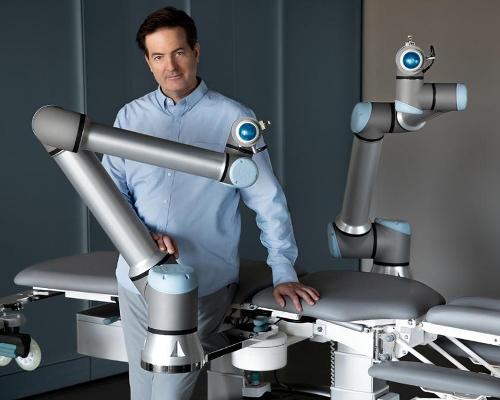17 Mar 2023
Massage Robotics develops one of the world’s first life-sized massage robots
BY Megan Whitby

Brothers Christian and Sean Mackin are taking touchless therapy a step further by creating one of the first life-sized massage robots.
They’re co-founders of tech start-up Massage Robotics and have launched an AI-powered robot, named Alex, which is attached to a motorised bed and has two arms with interchangeable attachments to deliver a range of therapeutic techniques, such as kneading, rolling, vibrations, heat or electric pulses.
Users can select pre-existing massage routines from an app, create their own or verbally communicate with Alex to adjust its motion path or pressure in real-time.
“The robot remembers client preferences so it can deliver a perfect massage every time,” explains Christian, co-founder and CEO, who owns a product design and engineering firm.
Speaking in an exclusive interview with Spa Business, Mackin explained the inspiration for Massage Robotics came to him in 2013 following a severe off-road accident which left him with a broken back and neck.
He says: “During physical therapy and rehabilitation, I imagined a robot that could both help me (and others) feel better as well as relieve therapists from their repetitive work.”
The Mackins believe robots will solve many problems facing the massage therapy industry; labour shortages, issues with body privacy, lingering nerves about close contact and COVID-19, as well as affordability and time management.
“We’ll only offer a Robot-as-aService (RaaS) monthly subscription for B2B wellness clinics,” says Christian, as the cost of the device is not practical for most operators.
He anticipates the RaaS will be equal to a therapist’s monthly salary and that “pricing will be competitive to make a strong business case in markets across the world”.
He explains: “While a typical person may work around 2,000 hours per year, a robot is potentially capable of working 8,000 hours, so can be significantly more productive.”
That said, Christian is keen to emphasise that Massage Robotics isn’t trying to replace the vital role of human touch in spas. “I know introducing a robot into a 5,000-year-old, human-centric therapy is disruptive but we’re not trying to make a robotic hand that exactly replicates a human hand.
“We’re designing a robot that can approximate some therapeutic modalities and using biomimicry to apply those therapies. Using video recordings, we capture the human motions and then design algorithms that recreate them through the robot.
“It’s a unique experience to be touched by a massage robot. You have to feel it to understand it. The robot moves like a human and talks like a human, but Alex has superhuman memory.”
Close Window